Yousuf Karsh
Yousuf Karsh CC (December 23, 1908 – July 13, 2002), was an Armenian-Canadian photographer known for his portraits of notable individuals. He has been described as one of the greatest portrait photographers of the 20th century.
Yousuf Karsh | |
|---|---|
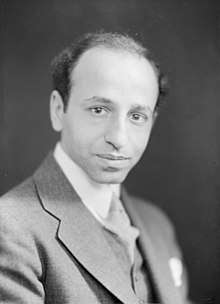 Karsh in 1936, by Joseph-Alexandre Castonguay | |
| Born | December 23, 1908 Mardin, Ottoman Empire (present-day Turkey) |
| Died | July 13, 2002 (aged 93) Boston, Massachusetts, U.S. |
| Burial place | Notre-Dame Cemetery |
| Nationality | Armenian-Canadian |
| Website | karsh |
An Armenian Genocide survivor, Karsh migrated to Canada as a refugee. By the 1930s he established himself as a significant photographer in Ottawa, where he lived most of his adult life, though he traveled extensively for work. His iconic 1941 photograph of Winston Churchill was a breakthrough point in his 60-year career, through which he took numerous photos of known political leaders, men and women of arts and sciences. Over 20 photos by Karsh appeared on the cover of Life magazine, until he retired in 1992.
Background and early life
Yousuf Karsh was born to Armenian parents Amsih Karsh, a merchant, and Bahai Nakash,[1] on December 23, 1908 in Mardin, Diyarbekir Vilayet, Ottoman Empire.[2][3] The city's Armenian population was largely Arabic-speaking.[4] His Armenian name, Hovsep,[5][6][7] is a variant of Joseph, while Yousuf is the Arabic version of the same name. He grew up during the Armenian Genocide, during which some of his family were murdered.[8][9] Karsh and his family escaped to a refugee camp in Aleppo, Syria in 1922 in a month-long journey with a Kurdish caravan.[4][10][11] The Economist noted in their obituary of Karsh that he "thought of himself as an Armenian"[12] and, according to Vartan Gregorian, "Although he was proud to be Canadian, Karsh was equally proud to be Armenian."[13]

Karsh was sent to Canada by his family.[14][15] He arrived in Halifax, Nova Scotia on December 31, 1923 by ship from Beirut.[16] He immediately moved to Sherbrooke, Quebec to live with his maternal uncle George Nakashian (Nakash), a portrait photographer.[17][10][18] Karsh worked for, and was taught photography by his uncle.[19][2] He gave Karsh a Box Brownie camera.[12] From 1928 to 1931, Karsh apprenticed in Boston, Massachusetts for John H. Garo, the most prominent Armenian photographer in America at the time who had made a name for himself photographing Boston celebrities.[4][19][20]
Career
Karsh settled in Ottawa and opened his first studio in 1932.[2][19] It was located on the second floor of a building at 130 Sparks Street, which was later named the Hardy Arcade.[16] He remained there until 1972, when he moved to Château Laurier.[19] He was known professionally as "Karsh of Ottawa",[9][18][10][21] which was also his signature.[17] He achieved initial success by capturing the attention of Canadian Prime Minister Mackenzie King, who helped Karsh arrange photography sessions with visiting dignitaries.[22]
Throughout his life, Karsh photographed "anyone who was anyone."[12] When asked why he almost exclusively captured famous people, he replied, "I am working with the world's most remarkable cross-section of people. I do believe it's the minority who make the world go around, not the majority."[18] He once also jokingly remarked, "I do it for my own immortality."[17] By the time he retired in 1992, more than 20 of his photos had appeared on the cover of Life magazine.[22] Karsh's photos were known for their use of dramatic lighting, which became the hallmark of his portrait style. He had studied it with both Garo in Boston[19][3] and at the Ottawa Little Theatre, of which he was a member.[18][2]

His 1941 photo of Winston Churchill, the British Prime Minister, brought him prominence.[23][24] The photo was taken on December 30, 1941 in the chamber of the Speaker of the House of Commons in the Canadian Parliament in Ottawa after Churchill delivered a speech on World War II to the Canadian members of the parliament. It was arranged by Canadian Prime Minister Mackenzie King.[11][10] Churchill is particularly noted for his posture and facial expression, which have been compared to the wartime feelings that prevailed in the UK: persistence in the face of an all-conquering enemy. The photo session was short and, just before exposure, Karsh moved towards Churchill and removed the cigar which he had in his hand. Churchill was miffed and showed his displeasure in the portrait.[12] The photo, which according to The Economist is the "most reproduced portrait in the history of photography",[12] has been described as one of the "most iconic portraits ever shot".[10] USC Fisher Museum of Art described it as a "defiant and scowling portrait [which] became an instant icon of Britain's stand against fascism."[25] It appeared on the cover of the May 21, 1945 issue of Life,[26] which bought it for $100.[12] It now hangs on the wall of the Speaker's chamber.[10]
During World War II, Karsh photographed political and military leaders and began capturing photos of writers, actors, artists, musicians, scientists, and celebrities in the post-war period.[20] His 1957 portrait of the American novelist Ernest Hemingway, which was shot at Hemingway's Cuban home Finca Vigia,[27] is another well-known photo by Karsh.[8] (Finca Vigia is located in the small, working-class town of San Francisco de Paula, about 10 miles east of Havana.) According to Amanda Hopkinson it made Hemingway look like the hero of his novel The Old Man and the Sea.[18] His other notable portraits include George Bernard Shaw at an old age (1943), Dwight D. Eisenhower as a five-star general and Supreme Commander of the Allied Expeditionary Force (1946), American artist Georgia O'Keeffe in her New Mexico studio (1956), Soviet leader Nikita Khrushchev swathed in fur (1963).[2]
Besides portraits of the famous, Karsh photographed assembly line workers in Windsor, Ontario, commissioned by the Ford Motor Company of Canada.[10] He also photographed landscapes of Rome and the Holy Land to be included in books in collaboration with Bishop Fulton J. Sheen, an annual poster for the Muscular Dystrophy Association, and other works.[11]
He was a visiting professor at Ohio University and at Emerson College in Boston.[2]
Gallery
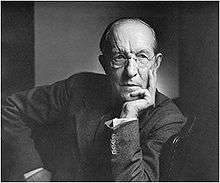
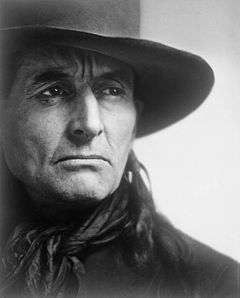
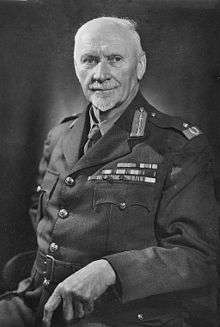
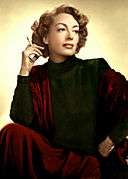
 Lord Beaverbrook
Lord Beaverbrook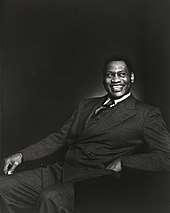

Marriages
Karsh's first marriage was to Solange Gauthier (1902−1961) in 1939.[17][23] He met her at the Ottawa Little Theatre in 1933,[1] where she was a star. Gauthier was born in Tours, France and migrated to Canada as a young girl.[28] They initially moved into her apartment and in 1940, into an Art Deco home called Little Wings on the Rideau River just outside Ottawa.[16] She died in January 1961 of cancer.[28]
His second marriage was to Estrellita Maria Nachbar, a medical writer 21 years his junior, in August 1962.[29] Their wedding was officiated by Fulton J. Sheen, Auxiliary Bishop of the Catholic Archdiocese of New York. From 1972 to 1992 they lived in a third-floor suite at Château Laurier, Ottawa[8][10] and maintained Little Wings and an apartment and studio in Manhattan. They had no children.[17]
Retirement and death
Karsh retired in July 1993, aged 84.[30] His penultimate sittings in May 1993 were with President Bill Clinton and First Lady Hillary. He closed his studio at Château Laurier[19] and moved to Boston in 1997.[31] He died on July 13, 2002 at Brigham and Women's Hospital in Boston after complications following surgery.[2][14] A private funeral was held in Ottawa.[14] He was interred in Notre-Dame Cemetery in Ottawa.[32]
Recognition
.jpg)
Karsh has been recognized as Canada's leading portrait photographer.[33] In general, he is recognized as one of the best-known[14] and great[22] portrait photographers of the 20th century. The Economist wrote upon his death that Karsh was "for half a century perhaps the greatest portrait photographer in the monumental manner."[12] The website of the Governor General of Canada describes him as the "pre-eminent portrait photographer of the twentieth century."[9] The Metropolitan Museum of Art described him as "one of the greatest portrait photographers of the twentieth century [who] achieved a distinct style in his theatrical lighting."[34] The Canadian Encyclopedia noted that his portraits "have come to represent the public images of major international figures of politics, science, and culture in the twentieth century."[19]
By the time he died, his work was on display permanently at the Metropolitan Museum of Art, Museum of Modern Art (both in New York), National Gallery of Canada, National Portrait Gallery in London, National Museum of Modern Art in Tokyo, Art Institute of Chicago, Saint Louis Art Museum, George Eastman Museum, and elsewhere.[2] In 1987 the National Archives of Canada acquired the complete collection of Karsh items, including the negatives, prints and transparencies produced and retained by Karsh since 1933.[19] The current Library and Archives Canada collection has 355,000 items in its Karsh collection, including all of his 150,000 negatives,[23] kept at a facility in Gatineau, Quebec.[8]
He was a member of the Royal Canadian Academy of Arts and an honorary fellow of the Royal Photographic Society (UK).[2][18]
On June 9, 2017 a bust of Karsh by Canadian-Armenian sculptor Megerditch Tarakdjian was unveiled before Château Laurier, Ottawa. It depicts Karsh with his famous camera and is a gift to Canada from the people of Armenia on the occasion of the 25th anniversary of the establishment of diplomatic relations between the two countries and the 150th anniversary of Canada. Among attendees were George Furey, the Speaker of the Senate, and Arif Virani, the Parliamentary Secretary to the Minister of Canadian Heritage.[35][36][37]
The Karsh Award, dedicated to Yousuf and his brother Malak Karsh, is awarded by the City of Ottawa every two years to an established professional artist for outstanding artistic work in a photo-based medium.[38]
Awards
- Order of Canada: Officer (1967), Companion (1990)[9]
- Canada Council Medal (1965)[19][2]
- Achievement and Life Award, Encyclopædia Britannica (1980)[2]
Karsh was awarded honorary degrees from Dartmouth College (1961),[39] Ohio University (1968),[40] Tufts University (D.F.A., 1981),[41] Syracuse University (D.F.A., 1986),[42] Ohio State University (Doctor of Humane Letters, 1996),[43] and other universities.
Publications
- Faces of Destiny (1946)
- Portraits of Greatness (1959)
- Faces of Our Time (1971)
- Harsh Portraits (1976)
- Photographs of Yousuf Karsh: Men Who Make Our World (1967)
- Karsh: A Fifty-Year Retrospective (1983)
- Harsh Canadians (1978)
References
- "Karsh: 50 Years of Photographs by Yousuf Karsh". National Portrait Gallery, London. 1984. Archived from the original on 15 March 2016.
- "Yousuf Karsh, Who Photographed Famous And Infamous of 20th Century, Dies at 93". The New York Times. 14 July 2002.
- "Yousuf Karsh". National Gallery of Canada. Archived from the original on 15 July 2017.
- Adalian, Rouben Paul (2010). Historical Dictionary of Armenia. Lanham, Maryland: Scarecrow Press. p. 375. ISBN 978-0-8108-7450-3.
- Chookaszian, Levon (1986). "Քարշ Հովսեպ [Karsh Hovsep]". Soviet Armenian Encyclopedia Volume 12 (in Armenian). p. 430.
- "Քարշ Հովսեփ [Karsh Hovsep]". encyclopedia.am (in Armenian). Armenian Encyclopedia.
- Hovhannisyan, Armen (18 November 2013). Հայազգի լուսանկարիչ Քարշի աշխատանքների ցուցահանդես՝ ԱՄՆ-ի ազգային պատկերասրահում (in Armenian). Voice of America Armenian Service. Archived from the original on 15 July 2017.
...Յուսուֆ (Հովսեփ) Քարշի...
- Gardner, Simon (28 April 2017). "New exposure for master portrait photographer Yousuf Karsh". Canadian Broadcasting Corporation. Archived from the original on 16 July 2017.
- "Yousuf Karsh, C.C." gg.ca. Governor General of Canada. Archived from the original on 13 June 2017.
- Crawford, Blair (14 May 2017). "The Capital Builders: How 'Karsh of Ottawa' captured the world's most famous people in photos". Ottawa Citizen.
- "Yousuf Karsh". The Daily Telegraph. 15 July 2002.
- "Yousuf Karsh". The Economist. 18 July 2002.
- "Karsh Photo Still Enthralls Vartan Gregorian". Asbarez. 10 November 2011.
- Thurber, Jon (14 July 2002). "Yousuf Karsh, 93; Photographs Captured Face of 20th Century". Los Angeles Times.
- Kaufman, Sarah (26 July 2009). "Review of 'Karsh at 100: Portraits of Artists' at Canadian Embassy". The Washington Post.
Karsh, an Armenian emigre who lived most of his life in Ottawa
- Gessell, Paul (1 September 2009). "KARSH: The early years". Ottawa Citizen.
- Clifford, Garry (March 1982). "Yousuf Karsh". People. 17 (8).
- Hopkinson, Amanda (15 July 2002). "Yousuf Karsh". The Guardian.
- Skidmore, Colleen (14 March 2010). "Yousuf Karsh". The Canadian Encyclopedia. Archived from the original on 14 July 2017.
- "Yousuf Karsh: Regarding Heroes". Art Institute of Chicago. 2009.
- "Armenian who became portraitist of the famous". The Irish Times. 20 July 2002.
- Berman, Eliza (18 March 2015). "Yousuf Karsh's Masterful Portraits From Churchill to Hepburn". Time. Archived from the original on 3 January 2017.
- Moroz, Sarah (29 October 2013). "From Elizabeth Taylor to Andy Warhol: Capturing the Famous Faces of the 20th Century". Slate.
- "From Colonel Sanders to Grace Kelly: Iconic American Portraits by Yousuf Karsh". Smithsonian. 19 November 2013.
- Travis, David (2010). "Yousuf Karsh: Regarding Heroes". USC Fisher Museum of Art, University of Southern California.
- "Winston Churchill". Life. 21 May 1945.
- "Finca La Vigía - Ernest Hemingway's Home in Cuba". hemingwaycuba.com.
- "Mrs. Karsh, Wife of Photographer, Business Manager of the Portraitist is Dead--Did Research for his Work". The New York Times. 26 January 1961.
- "Yousuf Karsh, Photographer, Marries Estrellita Nachbar". The New York Times. 29 August 1962.
- "karsh.org - Sittings by Date". Retrieved 16 Jul 2018.
- Matchan, Linda (6 November 2007). "She's a portrait of passion". Boston Globe.
Although by native standards she's practically a newcomer (the Karshes moved here from Ottawa 10 years ago)...
- "Dozens of tombstones damaged in Ottawa cemetery". CTV News. 2 May 2010.
The large grounds host a number of Canadian luminaries, including photographer Yousuf Karsh, former prime minister Wilfrid Laurier and former Chief Justice of Canada Henri E. Taschereau.
- Teodorescu, Ioana (Fall 2009). "Karsh: Image Maker/Créateur d'images". Material Culture Review/Revue de la culture matérielle. University of New Brunswick. 70.
- "Ernest Hemingway, 1957". metmuseum.org. Metropolitan Museum of Art. Archived from the original on 11 October 2014. Retrieved 11 October 2014.CS1 maint: BOT: original-url status unknown (link)
- "Monument Dedicated to World-Famous Canadian-Armenian Photographer Yousuf Karsh Unveiled in Ottawa". mfa.am. Ministry of Foreign Affairs of Armenia. 9 June 2017.
- Sevunts, Levon (12 June 2017). "Yousuf Karsh bust unveiled in downtown Ottawa". Radio Canada International.
- "Canadian-Armenian photographer Yousuf Karsh's statue inaugurated in Ottawa". Armenpress. 10 June 2017.
- "Karsh Award". ottawa.ca. City of Ottawa.
- "Commencement 1961". dartmouth.edu.
- "Past Honorary Alumni Awardees". ohio.edu.
- "Honorary Degrees". tufts.edu.
- "Awards and Honors: Recipient of Honorary Degrees". syr.edu. Archived from the original on 2016-07-30. Retrieved 2016-08-11.
- "Honorary Degrees". osu.edu. 12 July 1996. p. 12.
External links
- Official Yousuf Karsh Website
- Yousuf Karsh Profile at Photogpedia
- Yousuf Karsh fonds (R613) at Library and Archives Canada